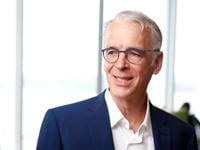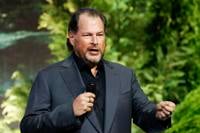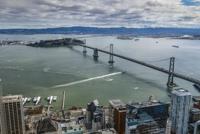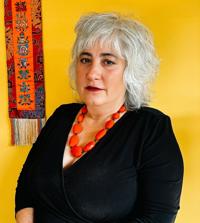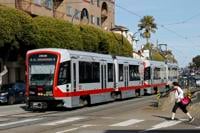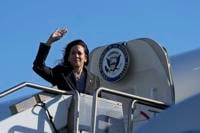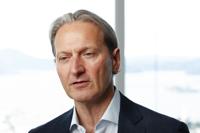The decision to base Salesforce in San Francisco came down in large part to the region’s crappy commutes.
At the time, that might have been considered a big ask. Ground zero for the tech industry was 50 miles south in Silicon Valley, where companies such as Intel, Apple and Cisco were based. Outside of a handful of dot-com, digital publishing and startup companies — many located in a nook of the South of Market area then known as Multimedia Gulch — there wasn’t much of a tech presence in The City. Instead, downtown was largely dominated by financial businesses such as Bank of America and Wells Fargo.
But Harris and the pair of developers he was bringing with him to found Salesforce — Dave Moellenhoff and Frank Dominguez — lived in The City and were tired of commuting down the Peninsula. Harris had a young child and wanted to be close to his family. He also had an inkling, as he puts it, that even if Salesforce was going to be based in San Francisco, he wouldn’t have a difficult time finding talented people to help them build it.
Salesforce Co-Founder and Slack CTO Parker Harris at the 25th anniversary of Salesforce event at Salesforce Tower in San Francisco on Thursday, March 7, 2024.
Craig Lee/The Examiner
“There were a lot of people like me that were commuting that would love to be part of a San Francisco-based technology company,” he said he thought at the time.
Boy, was he right. Salesforce grew and thrived in San Francisco. The company, which celebrated its 25th birthday Friday, employs more than 10,000 people in The City and nearly 73,000 around the world. It’s become one of the world’s biggest software companies and is the 35th most-valuable company globally by market capitalization. It pioneered and popularized cloud and subscription-based software, the dominant way enterprise applications are distributed and sold today.
But San Francisco benefitted as well by having Salesforce here.
The company played a key role in The City, displacing Silicon Valley as the epicenter of the Bay Area’s tech industry and arguably the world’s tech capital. It showed that a successful, large-scale tech business could be built in San Francisco.
Additionally, the venture investors and employees who profited from its growth created what Silicon Valley-ites like to call a virtuous cycle, investing the money into new startups based in The City, some of which, in turn, had their own success.
Benioff, his stature boosted by his company’s rapid rise, became a well-known champion of and spokesman for The City, helping attract other companies and entrepreneurs. He and the company also became an important part of San Francisco’s economy. Salesforce is almost certainly becoming one of its top taxpayers due to The City’s tax structure.

Marc Benioff, CEO of Salesforce, speaking at Dreamforce in the Yerba Buena Theater in San Francisco on Wednesday, Sept. 13, 2023.
Craig Lee/The Examiner
Benioff, the company and its employees have become major philanthropists, donating millions of dollars and hours of time to a slew of local organizations. And Salesforce’s annual Dreamforce conference has generated $1.5 billion in economic activity in The City over the last 10 years, according to San Francisco’s Office of Economic and Workforce Development.
The company has become the “golden child” of San Francisco and the Bay Area as a whole, said Sally Baack, a professor of strategic management and ethical leadership at San Francisco State’s Lam Family College of Business. It’s excelled not just in technology, innovation and business leadership, but in building a sustainable, values-driven business, she said.
“Many businesses find it really hard to get it right on all fronts, and Salesforce really was able to do that,” Baack said.
That Salesforce would become such a global behemoth and local mainstay was not at all clear when Harris met with Benioff in the fall of 1998 and hatched the idea for the company. It was near the height of the dot-com boom, and all kinds of crazy things were happening, Harris recalled in an interview last week. Startups were being launched, fizzling out or being snapped up in major deals in rapid fashion.
Inspired by Amazon, Benioff — then an executive at Oracle — wanted to create enterprise software that was just as easy to use as buying a book online. Harris, Moellenhoff and Dominguez seemed a good match. They had experience building sales software and at the time, had a small company that was consulting with early cloud-computing companies.

View of the Bay Bridge from the top of Salesforce Tower in San Francisco on Thursday, March 7, 2024.
Craig Lee/The Examiner
Going into the meeting, Harris and his colleagues knew little about Benioff. They’d tried to do some research on the Internet but only found one article about him. Coming out of their meeting, though, the team could see the potential in his idea and was inspired to work with him. They shut down their company, closed its accounts and set up shop in March 1999 in an empty apartment next to Benioff’s on Telegraph Hill to launch Salesforce.
“If you can follow and be with great people, that’s really, to me, how you can be successful,” Harris said. “I felt that with Mark when I met him.”
“I didn’t know that we could take [sales software] and expand it to what we’ve done today, but I knew that we would do something really amazing together,” he said.

Barbara Coccodrilli Carlson has worked on pivotal child-care initiatives in The City’s public and private sectors since 1996

Prop. L, which seeks to help close Muni’s yawning deficit, could fail even if it earns a majority of the vote due to a conflict with Prop. M

During what campaign officials said will likely be her last visit to California before the November election, the vice president raked in $27 million in The City
Big companies didn’t immediately rush to the idea of putting their customer data up on the internet, Harris said. At the time, many consumers were still hesitant to use their credit cards online, and corporations felt more secure storing their customer data in-house on their own servers. Many wanted Salesforce to allow them to do that, but Benioff and the team said no — that wasn’t the kind of business they were trying to build.
So they focused on selling to smaller companies. They started by giving away Salesforce’s service for free to its design partners in return for having those companies serve as references and evangelists for the service. As more companies tried the software and liked the experience, Salesforce’s success built on itself.
With the enterprise-class customers, “we just waited. We sold to other customers,” Harris said. “But then they came around because they developed trust in us.”
Within six months, Salesforce had moved into a larger space near Rincon Center. A year later, it moved into an even bigger office at 1 Market St.
In the years since, it’s continued to grow and develop, going public in 2004, surpassing $1 billion in sales in 2009, joining the Fortune 500 in 2015, and opening its iconic, skyline-defining 62-story Salesforce Tower headquarters building in 2018.
Along the way, it’s navigated numerous changes in the industry, such as the embrace of social media and mobile apps and the broader economy, including the dot-com bust, the Great Recession and the COVID-19 pandemic.
It hasn’t been all smooth sailing for the company or its relationship with The City. Salesforce laid off 20% of its staff in 2000 after the dot-com bubble burst. Over the last year, it’s cut another 8,700 workers, including more than 1,200 in The City.
Those latter cuts were due to over-hiring during the pandemic, David Schmaier, Salesforce’s chief product officer, said in an interview last month. Like other tech companies, Salesforce saw its sales boom as people were stuck at home and were turning to digital technologies to interact with each other and do business. Its sales growth slowed, though, as the economy reopened, people returned to offices and interest rates started to rise, putting a damper on corporate spending.

Salesforce Chief Product Officer David Schmaier at the 25th anniversary of Salesforce event at Salesforce Tower in San Francisco on Thursday, March 7, 2024.
Craig Lee/The Examiner
“We had to course-correct to get in line with the state of the economy,” Schmaier said.
And despite its recent cuts, Salesforce has resumed hiring and plans to continue to grow its workforce, including in The City, Schmaier said. It’s seeing plenty of opportunity ahead.
At the average company, a huge portion of employees are involved in sales, marketing or customer service and could benefit from having access to Salesforce’s core customer-relationship-management software, Schmaier said. Its Slack communications and Tableau data analysis software, which it acquired in 2021 and 2019, respectively, offer services that could benefit any and all companies, he said.
And then there are artificial intelligence and Data Cloud. The company launched its Einstein AI technology in 2016, and customers can now use it to craft email messages to clients, analyze sales data to predict which potential customers are mostly likely to sign up for their services, and create chatbots to answer customers’ commonly asked questions. Schmaier said that’s already proved popular with clients, and the company continues to add new features to make it more valuable to them.
Meanwhile, Data Cloud — Salesforce’s recently launched service that helps companies integrate and analyze customer data from different sources — is the company’s fastest-growing new product ever. Just two years after the company launched it, the product’s sales are growing at a 90% annual clip and approaching $400 million in annualized revenue, Brian Millham, the company’s chief operating officer, said on a recent conference call with analysts.
“We like our prospects,” Schmaier said.
Harris, too, said he’s excited about the future. AI has the potential to disrupt the industry and make room for new competitors, just like the commercialization of the Internet opened up an opportunity for Salesforce 25 years ago, he said — but it could also allow Salesforce to revolutionize the way it offers its services. Instead of customers logging into its software to get insights on their customers, AI-powered services could know customers well enough to deliver such insights automatically when they need them.
It reminds him a lot of when they launched Salesforce on Telegraph Hill 25 years ago, he said.
“The energy we have inside the company right now feels the same as when we started,” Harris said. “Part of what keeps me going is just, wow, there’s so much more to do — so much more we can do.”
Salesforce’s continued health and growth would be good news for San Francisco, and not just because of the taxes the company will contribute to The City’s coffers, said Sarah Dennis Phillips, the executive director of the Economic and Workforce Development Office. The company, its leaders and employees have shown a commitment and care for The City’s health and vitality that’s rare in business, she said.
The company has “just become an integral part of San Francisco’s fabric,” she said.
Copyright for syndicated content belongs to the linked Source link

